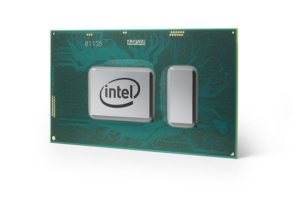
Early in 2015, Apple (NASDAQ: AAPL) introduced an all-new laptop, branded MacBook. The device’s claim to fame was that it was extremely thin and light and didn’t use a fan to keep the processor inside of it cool, which made the device extremely quiet.
The first iteration of the device used Intel’s (NASDAQ: INTC) then-new Core m series of processors, based on its then-new Broadwell architecture. Those initial processors were fairly slow (since they consumed substantially less power than Intel’s typical mobile processors), but were serviceable.
In 2016, Apple upgraded the MacBook to include updated processors from Intel, based on its much-improved Skylake architecture. This led to a dramatic improvement in performance. Indeed, in its review of the Skylake-based MacBook, CNET said the following, “At the same time, there’s a sizable enough boost to performance and battery life that the system can no longer be considered an outlier only suited for a very limited audience that values portability over productivity.”
Then, in 2017, Apple updated the MacBook once again with further upgraded processors from Intel, known as Kaby Lake. Kaby Lake was based on the same basic architecture as Skylake, but thanks to improvements in the implementation of that architecture and manufacturing technology, Kaby Lake provided the MacBook with a welcome performance bump.
In the first half of 2019, I expect Apple to upgrade the MacBook to include new processors from Intel based on the company’s upcoming Ice Lake architecture. This will probably be the single biggest jump in performance that Apple has ever delivered with the MacBook.
Let’s go over what to expect, shall we?
An epic performance boost
According to information posted by noted leaker “chrisdar” on the PTT forums (via ComputerBase, article in German), Intel’s Ice Lake-Y processors — “Y”-series chips are those intended for MacBook-like systems — will have the following specifications:
- Four processor cores
- GT2 graphics configuration
- LPDDR4 3733MHz memory support
It’s worth noting that while not in the leak, it is well known that the Ice Lake processors will incorporate an enhanced processor core compared to the ones in Skylake/Kaby Lake, an all-new graphics and media engine (known as Intel Gen. 11 graphics), as well as improvements elsewhere in the chip.

For some perspective, the current Kaby Lake processors in the MacBook have only two processor cores that incorporate Intel’s relatively dated Gen. 9.5 graphics.
In a nutshell, the Ice Lake-based MacBook should see a quantum leap in CPU performance (per-core performance should improve, and the doubling of the core count should help in multitasking and other processor intensive scenarios) as well as in graphics capability.
The move to LPDDR4 memory should facilitate the improvements in graphics/CPU performance since memory bandwidth — that is, the rate at which the processor can transfer data to and from main system memory — is set to grow substantially, and it should also help improve overall system efficiency.
The future of MacBook
Ultimately, I think with the next generation of MacBook, Apple will be able to offer the kind of performance that customers have generally come to expect from the higher-end 13-inch MacBook Pro models. This should make them perfectly suitable for the vast majority of consumer notebook use cases; they could even be quite capable for more “pro” workloads like video editing.
There will still be reasons for customers to buy higher-end MacBooks like the MacBook Pro — after all, those systems are still likely to be more powerful and have other system-level advantages over the regular MacBook — but the Ice Lake-based MacBooks should offer enough performance that if a customer prefers the smaller form factor of the MacBook, performance won’t be an issue.


